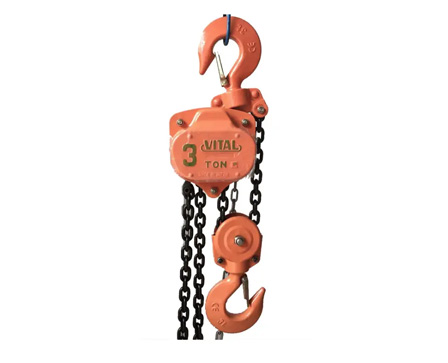
-
 Afrikaans
Afrikaans -
 Albanian
Albanian -
 Amharic
Amharic -
 Arabic
Arabic -
 Armenian
Armenian -
 Azerbaijani
Azerbaijani -
 Basque
Basque -
 Belarusian
Belarusian -
 Bengali
Bengali -
 Bosnian
Bosnian -
 Bulgarian
Bulgarian -
 Catalan
Catalan -
 Cebuano
Cebuano -
 Corsican
Corsican -
 Croatian
Croatian -
 Czech
Czech -
 Danish
Danish -
 Dutch
Dutch -
 English
English -
 Esperanto
Esperanto -
 Estonian
Estonian -
 Finnish
Finnish -
 French
French -
 Frisian
Frisian -
 Galician
Galician -
 Georgian
Georgian -
 German
German -
 Greek
Greek -
 Gujarati
Gujarati -
 Haitian Creole
Haitian Creole -
 hausa
hausa -
 hawaiian
hawaiian -
 Hebrew
Hebrew -
 Hindi
Hindi -
 Miao
Miao -
 Hungarian
Hungarian -
 Icelandic
Icelandic -
 igbo
igbo -
 Indonesian
Indonesian -
 irish
irish -
 Italian
Italian -
 Japanese
Japanese -
 Javanese
Javanese -
 Kannada
Kannada -
 kazakh
kazakh -
 Khmer
Khmer -
 Rwandese
Rwandese -
 Korean
Korean -
 Kurdish
Kurdish -
 Kyrgyz
Kyrgyz -
 Lao
Lao -
 Latin
Latin -
 Latvian
Latvian -
 Lithuanian
Lithuanian -
 Luxembourgish
Luxembourgish -
 Macedonian
Macedonian -
 Malgashi
Malgashi -
 Malay
Malay -
 Malayalam
Malayalam -
 Maltese
Maltese -
 Maori
Maori -
 Marathi
Marathi -
 Mongolian
Mongolian -
 Myanmar
Myanmar -
 Nepali
Nepali -
 Norwegian
Norwegian -
 Norwegian
Norwegian -
 Occitan
Occitan -
 Pashto
Pashto -
 Persian
Persian -
 Polish
Polish -
 Portuguese
Portuguese -
 Punjabi
Punjabi -
 Romanian
Romanian -
 Russian
Russian -
 Samoan
Samoan -
 Scottish Gaelic
Scottish Gaelic -
 Serbian
Serbian -
 Sesotho
Sesotho -
 Shona
Shona -
 Sindhi
Sindhi -
 Sinhala
Sinhala -
 Slovak
Slovak -
 Slovenian
Slovenian -
 Somali
Somali -
 Spanish
Spanish -
 Sundanese
Sundanese -
 Swahili
Swahili -
 Swedish
Swedish -
 Tagalog
Tagalog -
 Tajik
Tajik -
 Tamil
Tamil -
 Tatar
Tatar -
 Telugu
Telugu -
 Thai
Thai -
 Turkish
Turkish -
 Turkmen
Turkmen -
 Ukrainian
Ukrainian -
 Urdu
Urdu -
 Uighur
Uighur -
 Uzbek
Uzbek -
 Vietnamese
Vietnamese -
 Welsh
Welsh -
 Bantu
Bantu -
 Yiddish
Yiddish -
 Yoruba
Yoruba -
 Zulu
Zulu


Nën . 15, 2024 03:22 Back to list
i beam winch
Understanding the I-Beam Winch An Essential Tool in Material Handling
When it comes to lifting heavy loads in industrial settings, the I-beam winch stands out as one of the most effective and reliable tools available. Commonly utilized in warehouses, construction sites, and factories, the I-beam winch is designed to provide efficient lifting solutions where conventional hoisting methods may fall short. This article will delve into the structure, versatility, and applications of the I-beam winch, elucidating why it is an essential component in material handling systems.
The Structure of an I-Beam Winch
The I-beam winch gets its name from its distinctive I-shaped beam, which serves as both the guide and support for the winch mechanism. The beam is typically made of high-strength steel, granting it the durability needed to handle heavy loads. The design of the I-beam allows for optimal load distribution, reducing the risk of deformation or failure under extreme weights.
At the heart of the winch mechanism is the drum where the lifting cable or chain is wound. When the winch is engaged, the drum rotates, allowing the cable to either unfurl or wind up, facilitating the lifting and lowering of loads. This system can be operated manually or powered by electric or pneumatic motors, depending on the specific application and the required lifting capacity.
Versatility in Applications
One of the key advantages of the I-beam winch is its versatility. These winches can be adapted for a variety of applications, making them valuable in numerous industries. In manufacturing environments, for instance, the I-beam winch is often employed to lift components during assembly or to transfer products along production lines. It can easily be integrated into overhead rail systems, allowing for seamless movement throughout the workspace.
i beam winch

In the construction industry, I-beam winches are indispensable for hoisting materials to elevated work areas. They can handle everything from steel beams and concrete blocks to tools and equipment, streamlining construction processes and improving safety. Additionally, their capability to be mounted on existing I-beams or girders makes them a perfect choice for temporary setups, thus enhancing their utility.
This winch type is also commonly found in maintenance and repair operations, where heavy equipment and machinery need to be lifted or repositioned. In these scenarios, the I-beam winch enhances operational efficiency by reducing manual lifting efforts and minimizing the risk of injury to workers.
Safety Features and Considerations
Safety is paramount in any lifting operation, and the I-beam winch is designed with numerous safety features to protect both the load and the operator. Many winches are equipped with overload protection systems that automatically disengage the mechanism when the load exceeds a predetermined limit. Other safety features may include brake systems that ensure the load remains stationary when not in motion.
However, proper training and adherence to safety protocols are crucial when operating an I-beam winch. Operators should be well-versed in weight capacities, load balancing, and rigging techniques to prevent accidents. Furthermore, regular maintenance checks are necessary to ensure the winch functions correctly and remains in optimal condition.
Conclusion
In conclusion, the I-beam winch is a powerful tool that enhances the efficiency and safety of material handling in various industrial applications. Its robust construction, versatile design, and array of safety features make it an indispensable asset for lifting heavy loads. As industries continue to evolve and adopt advanced technologies, the I-beam winch will undoubtedly remain a key component in shaping the landscape of material handling equipment. Whether on construction sites, in manufacturing plants, or in repair shops, the value of the I-beam winch cannot be overstated, making it a go-to solution for lifting challenges across the board.
Latest news
The Unique Design of Cable Socks
NewsJun.04,2025
Swivel Connectors in Industrial Automation
NewsJun.04,2025
Safety Features of Link Sticks
NewsJun.04,2025
How to choose the best cable pulling winch for sale
NewsJun.04,2025
Fish tape safety precautions
NewsJun.04,2025
Essential Maintenance Tips for Cable Pulling Tools
NewsJun.04,2025











